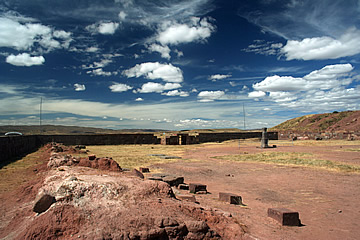

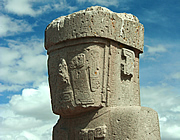
La Paz is a bustling city of contrasts which retains much of the indigenous Indian cultures; the streets are fascinating to wander, especially the older market areas.
Tiwanaku is an amazing pre-Columbian city which boasted a vast step pyramid and elaborate ceremonial temples, the centre of an enormous empire which was the precursor to the Incas.
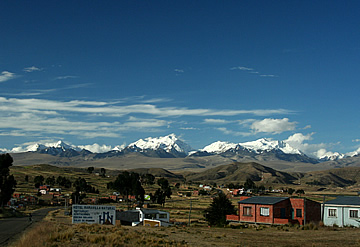
From Lake Titicaca it was about an hour and a half drive across the Altiplano to La Paz. It was towards the end of the day and quite clear so the views of the High Andes were fabulous. The same can't really be said of La Paz, an enormous city which sits in a bowl surrounded by snow-capped mountains.
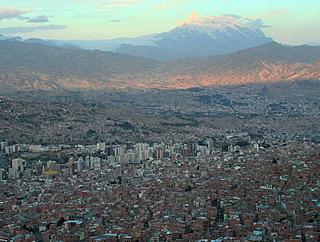
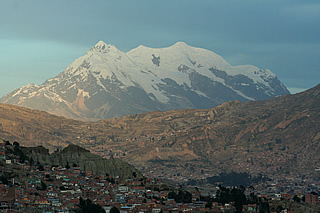
At about 3600m it is the highest capital city in the world. Its location below the Altiplano was the reason the Spanish chose to create a city here, to avoid the cold winds sweeping the plains above. As the population grows the city climbs higher up the sides of the hills which enclose it. The airport, from where we flew to Sucre, lies on the altiplano at over 4000m.
We were staying in the Europa in the heart of the city with a huge room on the top (twelfth) floor giving us a great view over the city to Mount Illimani.
On our first full day in La Paz our guide collected us and we drove up to the old part of the city, for a morning walking tour. It's a big city and we wandered around two or three times on our own too, to try and see as much as possible.
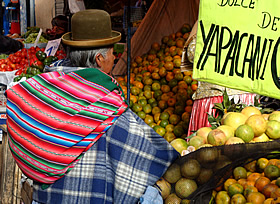
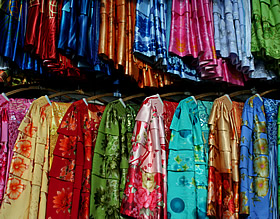
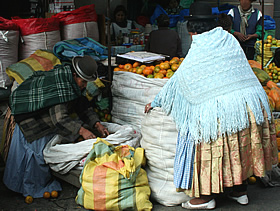
La Paz is a vibrant, colourful city full of contrasts. Where we were staying it's very modern with high rise buildings, busy roads, fine restaurants and almost everyone in European dress. In the north of the city, around Plaza Eguino and Avenida Buenes Aeres for instance, it is much more interesting, still very busy, with traditional dress much more in evidence on the older women. Many of the streets are crammed with stalls selling all kinds of things, from oranges - mountains of them - to kitchen utensils.
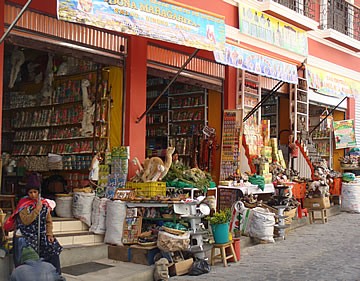
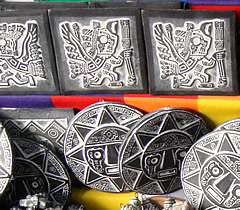
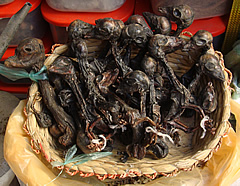
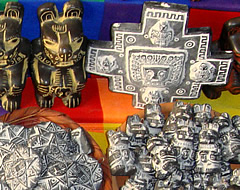
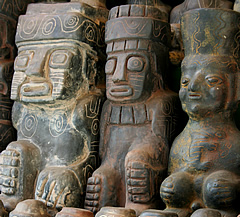
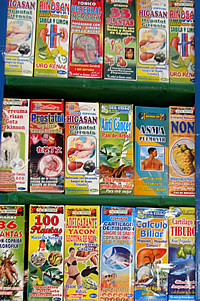
The Witches' Market is not for the faint-hearted. It is actually an area where traditional medicines and amulets are sold. So there are a lot of llama foetuses, for instance, and small dead llamas. We were assured that these were from miscarriages and stillbirths, but maybe that's just to keep the tourist happy. Representations of the sun and the stepped Andean cross feature strongly in the amulets.
Plates of offerings are prepared to bring good luck or to appease the earth goddess, Pachamama, usually by burning them. They are still used at the start of a building construction, for instance, buried in the foundations, to appease Pachamama for the scar inflicted on the earth.
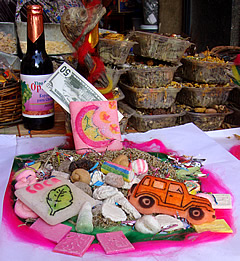
They might include herbs, perhaps llama meat and wool, coca leaves or representations of coca leaves, representations of wealth such as fake money or a small sugar car, walnuts representing good health - the list is probably endless.
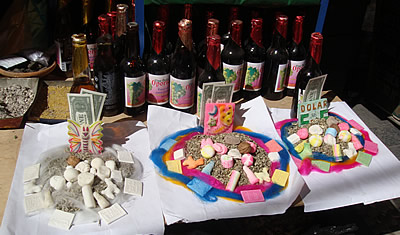
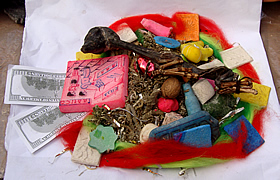
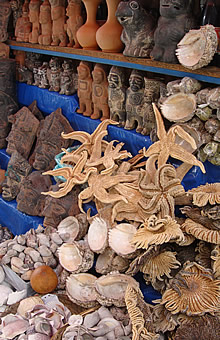
Though the majority of people are Catholics, many still consider themselves of native Indian descent and retain their traditional beliefs. The Aymara are the largest of the indigenous groups.
The indigenous women wearing traditional clothing and bowler hats are called cholitas. The story goes that a local tradesman ordered a batch from England for workers in La Paz, only to discover they were too small. Reluctant to lose his investment he sold them to the local women who really took to them, and the rest is history.
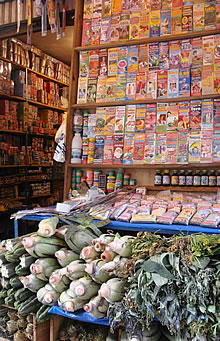
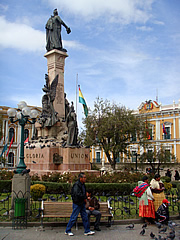
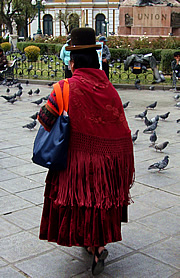
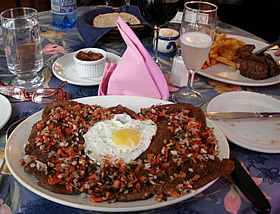
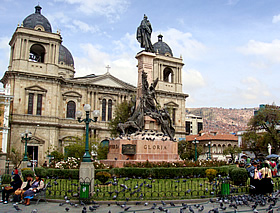
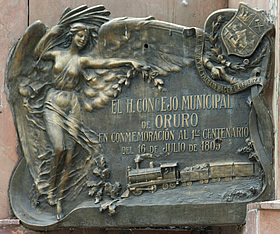
Plaza Murillo is the colonial centre of the city where the Cathedral, National Congress and the Government Palace can be found. The Government Palace is also known as Palacio Quemado - the "burned" palace - because it has twice burned down. None of them are very remarkable buildings though they are proud of the stained glass in the Cathedral.
The struggle for independence from the Spanish began with an uprising in Sucre in 1809, followed by a rebellion on July 16th of the same year in La Paz, led by Pedro Domingo Murillo. He was caught and hanged in the square in 1910. The square was renamed in his honour.
The statue in the centre of the square is of a later president, Gualberto Villarroel, who was assassinated by a mob, hanged from a lamp post in the square.
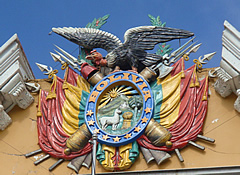
The Coat of Arms of Bolivia, which can be seen on the pediment of the Palacio Quemado, includes flags, muskets, canon and an Andean condor.
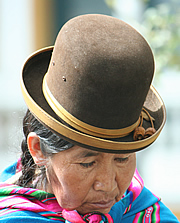
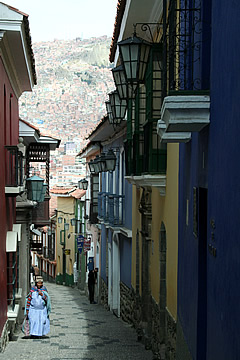
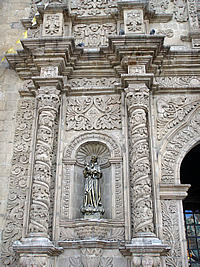
It is a pleasant enough square, rather over-populated with pigeons.

A few blocks north of Plaza Murillo is peaceful Calle Jaén. This pretty colonial street has just about the only domestic scale colonial architecture remaining in La Paz. Originally it was called Calle Kaura Kancha and was where the market for llamas, alpacas and vicuñas was held in the seventeenth century, for the indigenous people in the villages close to La Paz.. It was renamed for Don Apolinar Jaén, a native of Oruro and a prominent revolutionary.
The street is said to be haunted by all manner of spirits, the most infamous of which is a widow who seduces drunk men and carries them off for a mysterious adventure. To ward against the malignant spirits the residents placed a green cross at the lower entrance to the street.
The Church of San Francisco on Plaza San Francisco has very fine stone carving on the facade, it's a much more attractive building than the cathedral. Inside there are elaborate gold altars and a fine barrel-vaulted roof. Even better, the characters on the facade are a mix of fantastical native art and Catholic tradition.
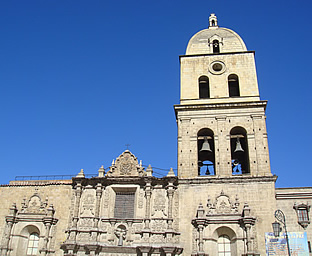
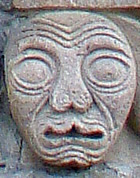
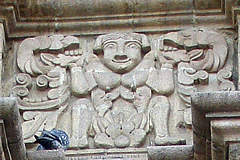
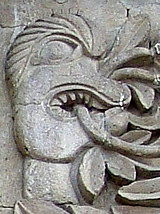
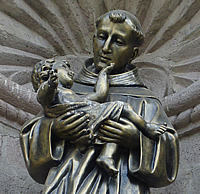
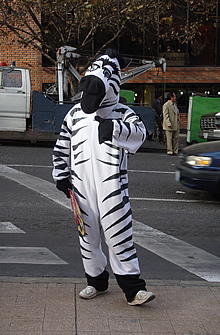
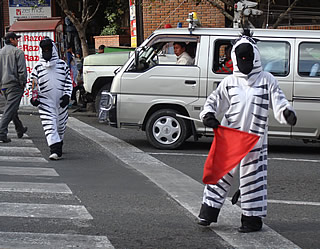
One of the things we really liked about La Paz were the Zebras. These are poor youngsters, hired by the city, dressed in zebra costumes and attempting, with a great deal of humour, to make vehicles and pedestrians behave properly on the city's roads. They are a breath of fresh air in a typically impersonal big city - La Paz can be proud of them.
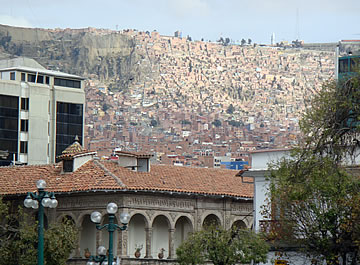
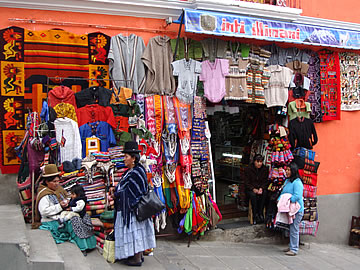
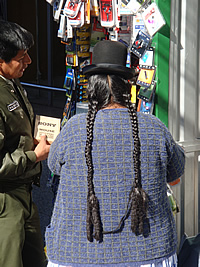
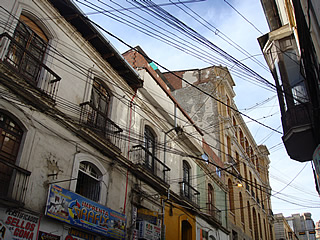
We wandered up to Plaza Murillo one day in search of a good map of the Uyuni area and found one at Gisbert & Co, Calle Comercio, a delightfully old-fashioned book store - the payment system had us stumped for a while!
Afterwards we stopped in at Alexander Coffee on Potosi, situated in a rather dilapidated building but inside it's fine. They have very good coffee and excellent hot chocolate. Again, I was a bit bemused at first until I discovered the block of chocolate at the bottom of the hot milk, needing to be stirred to melt - then it was excellent!
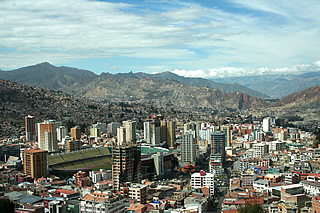
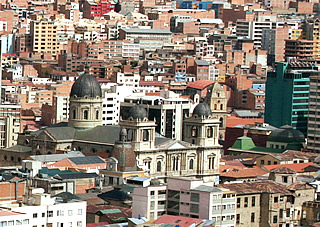
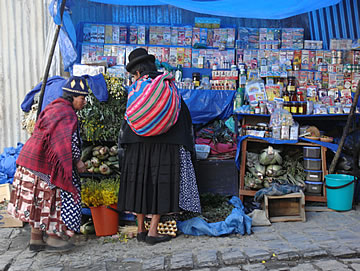
To the east of La Paz the Mirador Killi Killi gives extensive views of the city.
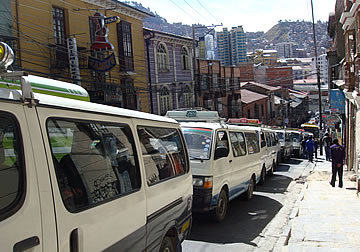

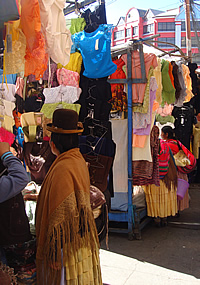
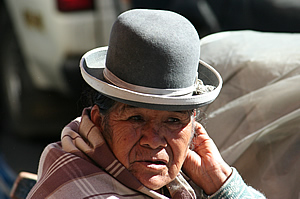
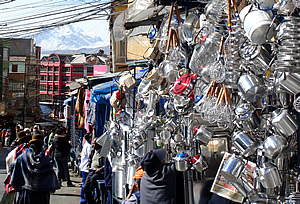
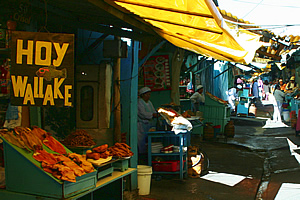
Heading north one morning towards Avenida Buenos Aires we were looking to explore the market and artisans areas of the city. It really is a colourful area and well worth the effort of climbing the uphill streets to get there. It's quite a long way from the downtown area where we were staying. We wandered into the meat market at one point where a very jolly man was heaving sides of beef around - more than happy to have his photograph taken. The views of Illimani from here are excellent.
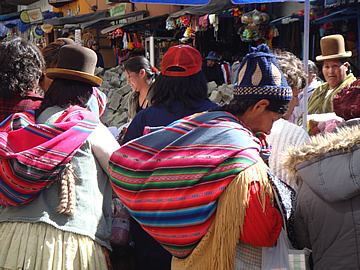
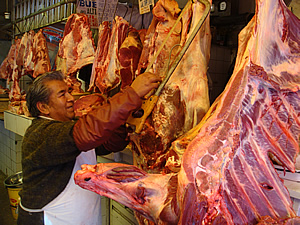
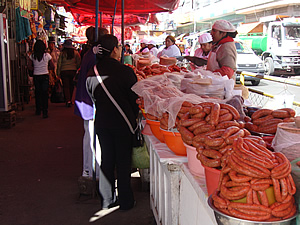
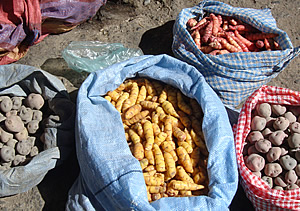
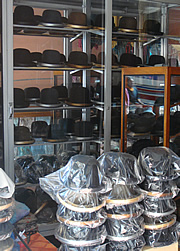
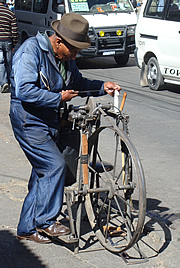
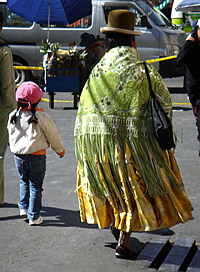
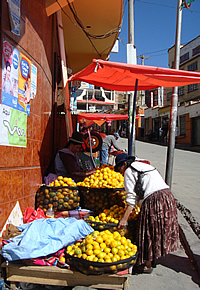
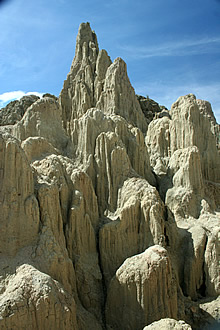
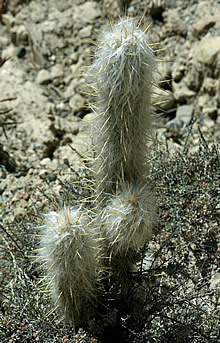
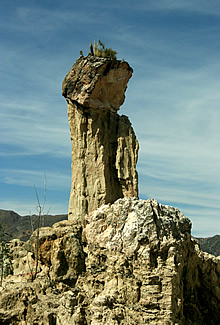
South of the city, and on every tourist's agenda, is the Valle de la Luna - the Valley of the Moon.
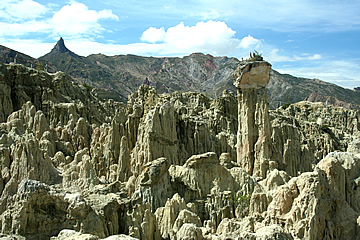
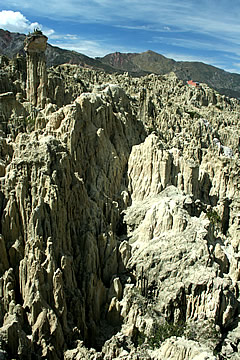
Compared to some of the spectacular USA landscapes (or other parts of Bolivia!) it's a bit disappointing, but interesting nonetheless, if only for the fact that it hasn't yet been completely washed away by the torrential rains that La Paz experiences. The lumpy landscape seems to be composed only of mud-packed pebbles. There are some great cactii here though!
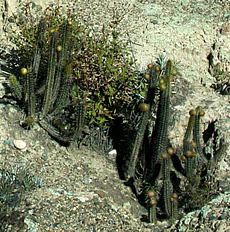
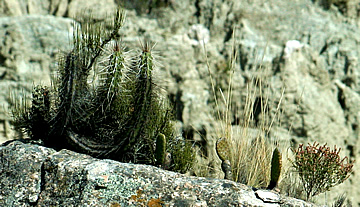
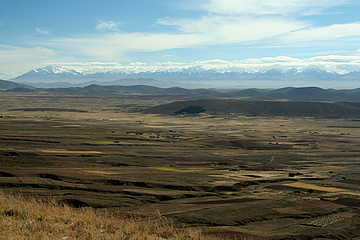
Tiwanaku is a must for anyone interested in ancient civilisations. The predecessors of the Incas, the Tiwanaku empire covered almost half of Bolivia, southern Peru, northern Chile and north western Argentina. Tiwanaku itself may date from as early as 1600BC but the remains at the archaeological site date from the eighth to tenth centuries AD. It lies about 70km west of La Paz near the southern shore of Lake Titicaca.
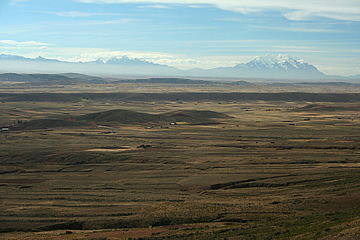
We crossed the Altiplano above La Paz on the Pan American Highway, stopping at El MIrador for wonderful views over the plains to the High Andes.
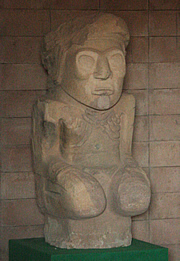
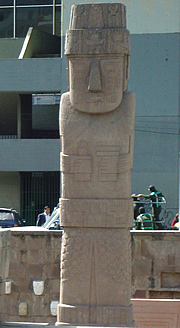
Our guide took us first into the small museum, unfortunately photographs was forbidden in most of it. He gave us a very good tour explaining the historical background to the site. Some historians think that the site might have been occupied as far back as 2000BC, perhaps even further. The most influential period for the Tiwanaku civilisation was perhaps from 600 to 1200 AD when the empire stretched over the Andes into the sub-tropical region. The empire was formed not by conquest but by a system of reciprocity, exchanging e.g. knowledge for goods. This is the same kind of system that the Incas used and it is thought the Incas may have descended from the most dominant of the Tiwanaku cultures.
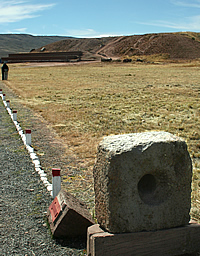
Potatoes are an extremely important part of the diet in this part of the world and our guide explained how they dried them - something his own family has done. In the museum two types of potato were displayed: dark ones and white one. The dark potatoes were subjected to cyclical freezing then crushed with the feet. On a breezy day the resultant mixture was tossed into the air, the skins blowing away and the dried potato dropping to the ground to be collected. The white potatoes were frozen - easily done by leaving them spread out on the ground overnight - then buried in a hole by a river bank for 25 days. After this they were removed and peeled.
The star exhibit in the museum is the magnificent original 7.3m monolith or stela housed in a stepped pit in a building which unfortunately is literally cracking up - in fact the whole museum looks in a poor state of repair. The base of the monolith is being eroded by underground water. It had been relocated to La Paz but suffered from the pigeons and graffiti so was returned a few years ago, a replica remaining in the city. Known as the Bennett monolith, after the archaeologist who discovered it, it's a stunning piece of stonework, a rough human form holding a ceremonial cup in its left hand and a staff in its right hand, and beautifully decorated with carvings of winged creatures, animals and flowers.
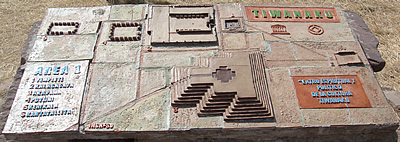
Then we headed over to the site itself. The settlement is close to the southern shore of Lake Titicaca at an elevation of around 4000m. To build this city huge blocks of red sandstone, the largest found over 130 tons, were brought from up to 10km away. The beautiful greenish stone, from which the most important artefacts were carved, came from the Copacabana peninsula, 90km away on Lake Titicaca. Lake Titicaca was much higher at that time and it has been shown by a team of archaeologists from Penn State University that reed boats could be used to transport very heavy blocks of stone.

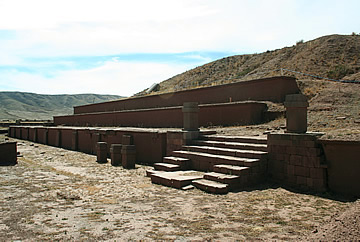
The near landscape is marshy and the city thrived on a system of raised field agriculture. By elevating the crops on raised fields above the surrounding watery plain, separating them by flooded ditches, the crops were exposed to high levels of sunlight and efficiently irrigated. It was important also to have frost-resistant crops such as potatoes and quinoa, both still highly important constituents of the local diet today. The success of the system contributed to the wealth of the city and helped to fuel its expansion.
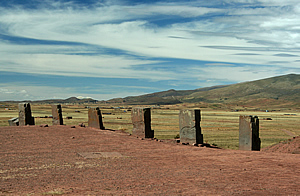
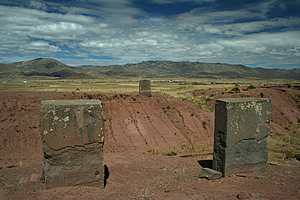
What it must have looked like at the peak of empire! In particular the seven level stepped pyramid called the Akapana, covering 28000 sq m, must have been spectacular. On the top level there was once a huge Andean Cross shaped pit where there is thought to have been a ceremonial pool to reflect the sun and stars.
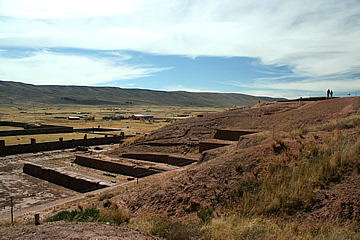
Though Tiwanaku was declared a World Heritage Site by UNESCO its status is in doubt due to corrupt use of funds and inappropriate renovation such as mud walls on the pyramid terraces which should be stone.
On the south eastern side of the top of the extensive earth mound a series of magnetic stones stands in a line. Across a wide ditch similar stones can be seen at the same level. They look as though they might line an entrance way and the curious thing is that they are variably magnetic over their surface.
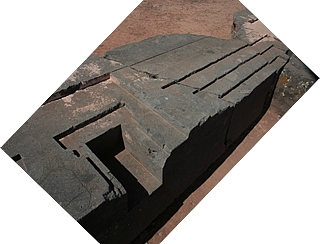
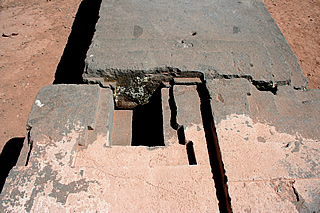
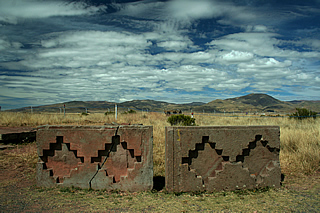
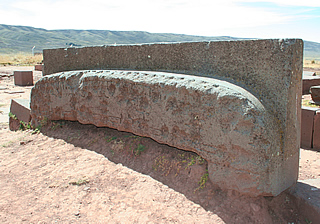
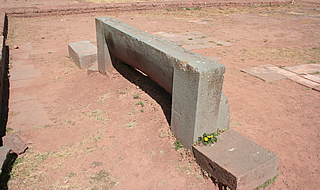
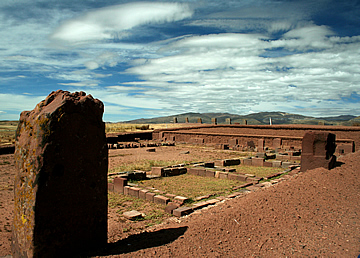
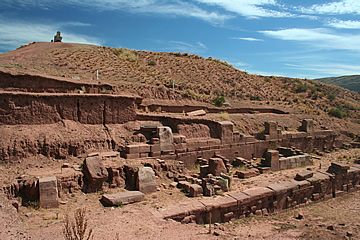
From the Akapana we explored an area at the far eastern edge of the site known as Kantatallita. It is littered with huge blocks of stone, many of them carved, some of the area paved with square slabs.
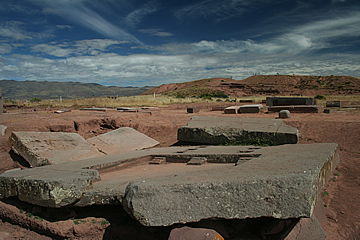
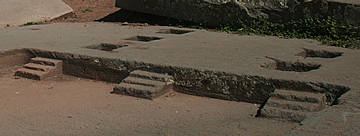
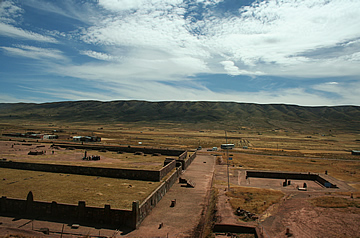
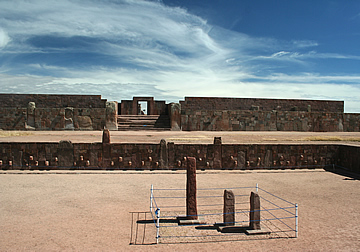
From here we headed west approaching the Temple Semisubterraneo and the Kalasasaya on an east west approach, perfectly aligning the road with the entrance e to Kalasasaya and the monolith beyond.
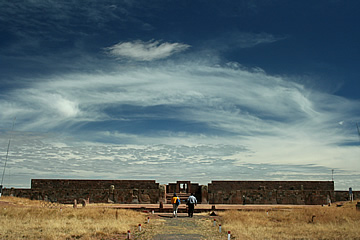
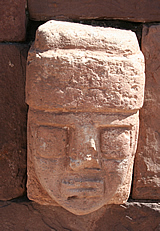
The Tempio Semisubterraneo or sunken temple is recessed into the ground perhaps a couple of meters. Set into its stone walls are carved stone heads, all different, and said to represent all of the cultures within the Tiwanaku empire. Information from UNESCO suggests that this could reflect the ancient practice of displaying the severed heads of conquered enemies in the temple. Whatever the reason, it is very impressive and, I believe, unique.
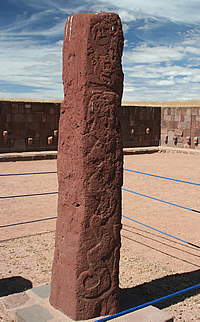
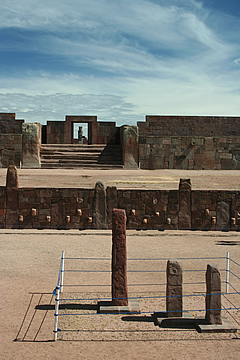
The Bennett monolith was excavated in this temple. Now three smaller monoliths stand in the centre of the sunken space. They are carved on their surfaces, the sides of the largest depicting animals and snakes.
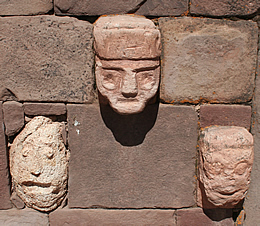

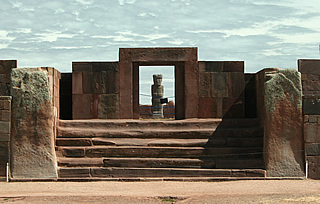
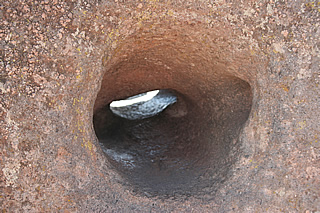
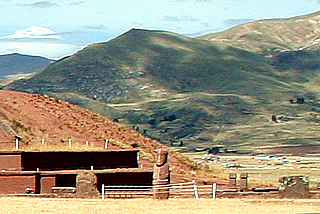
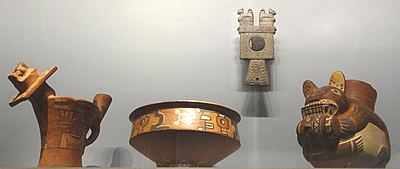
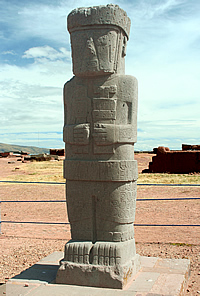
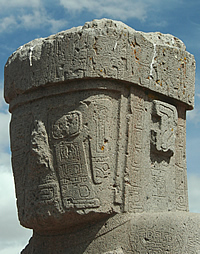
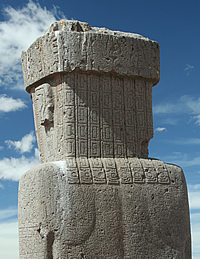
West of the sunken temple is Kalasasaya, which means "standing stones" in reference to the stelas here. This is the largest of the ceremonial spaces, raised on a grassy platform and surrounded by a wall.
On a "gatepost" of the north entrance to Kalasasaya is another example of the "inner ear" megaphone - we tried it out and it really works, both to amplify the voice and to hear low volume sound from some distance.
Two impressive monoliths or stelas, both about 3m in height, have been re-erected here: the Fraile (Friar, though why it is called this is obscure) and the Ponce (named after the archaeologist Carlos Ponce) which is in line with the gateway from the sunken temple.
The Fraile monolith is badly damaged and not highly decorated; it is made from a block of stone with two distinct colours.
The 2.4m Ponce Monolith on the other hand is in very good condition. It stands in a sunken courtyard facing the east gateway - at spring and autumn equinox the rising sun illuminates the monolith through the gateway. Its surface is covered with intricate carved designs. The back of the head is carved into stylised plaits and the body has clearly carved shoulder blades, reminiscent of the much older menhirs on Corsica. Ears, fingers and toes are precisely delineated too. He looks to be wearing a hat, short trousers, anklets and a thick belt and carries something in both clenched hands, probably ritual items such as a snuff tray.
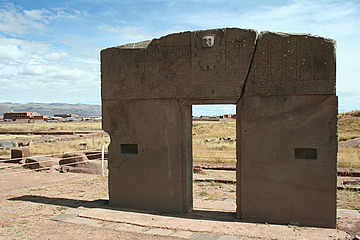
The Puerta del Sol or Sun Gate stands in the north west corner, though this is not its original location. It is carved from a single block of stone, with a representation of a deity, possibly the Sun God surrounded by four rows of what look like worshipping winged figures. There are two types of figure in alternating rows, one of which is beaked.
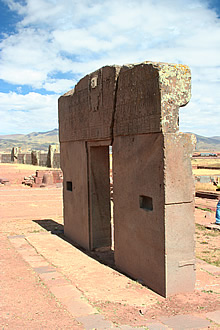
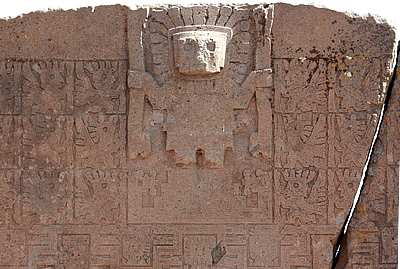
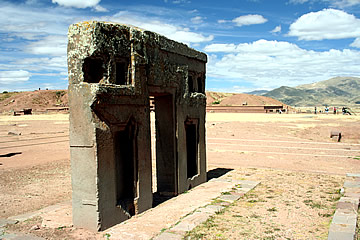
The reverse of the gate has deeply carved niches, perhaps for offerings or small statues.
It is thought that the gate may have originally stood in line with the Ponce monolith and the gateway to the sunken temple and that it was also wider than it is now, probably with added blocks of decorated stone.
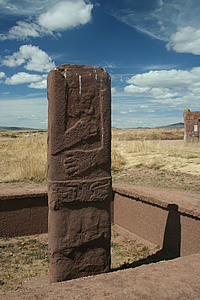
As we left the site, having spent several hours exploring, we came upon a final stela, sunk into a pit and missing its head. It must have been one of many that once stood in this wonderful place.
